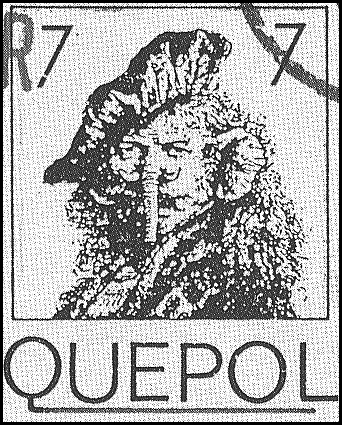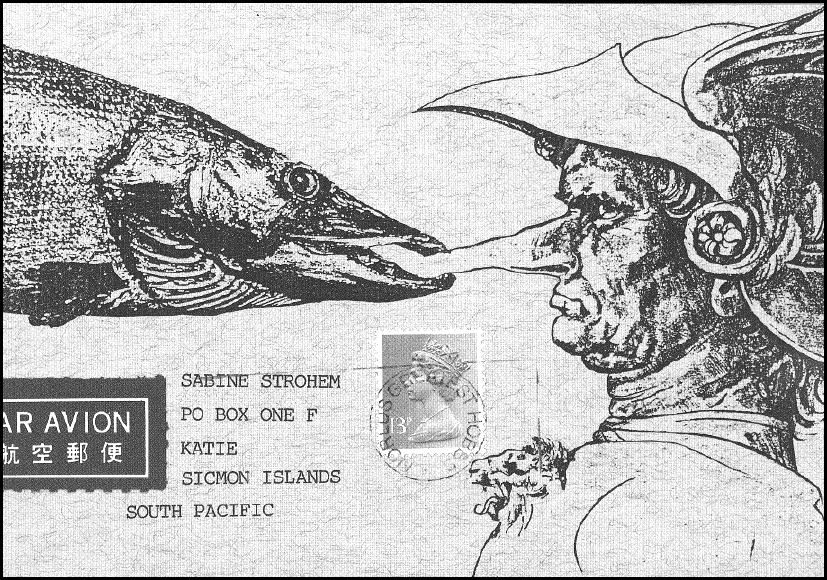An Extraordinary Correspondence
Nick Bantock
(Chronicle)

The way they find each other: she has visions of his art work. "When you draw or paint, I see what you are doing while you do it." To prove it she tells him, "Last week while working on a head in chalk, you paused and lightly sketched a bird on the bottom corner of the paper."
Then, on page 13, envelope addressed to
- Griffin Moss
41 Yeats Avenue
London
NW 3
England.
The next page, envelope addressed to her, decorated in filigree (Renaissance face, long nose being snapped by smiling fish --- see below). Open up the envelope: bad typing, childhood stories of father "wearing his traditional uniform of socks and moth-eaten dressing gown," mother in her "lemon carpet slippers and housecoat." Mother and father die in accident when he is 15, he moves in with mother's stepsister, "a potter, the kindest person I've ever met."
Wandering through Griffin and Sabine is like moving into the lives of two artistic, sensitive people, and having a chance to read their mail. The cards and letters are loaded with drawings and sketches, primitive and Renaissance, naturalistic. Further on in the book the pictures and words get weirder, more violent (banana shooting bullet through apple; four naked featherless birds crowding each other, vacant blue-blind eyes) The words, too, become more desperate: "I never used to be like this," he writes: "My days are barren." She tells him to visit, but:
- Sabine
Things have become so difficult ... you don't exist ... I invented you ... before it takes me over it has to stop.
Goodbye.
Then she:
- You do not dismiss a muse at whim.
